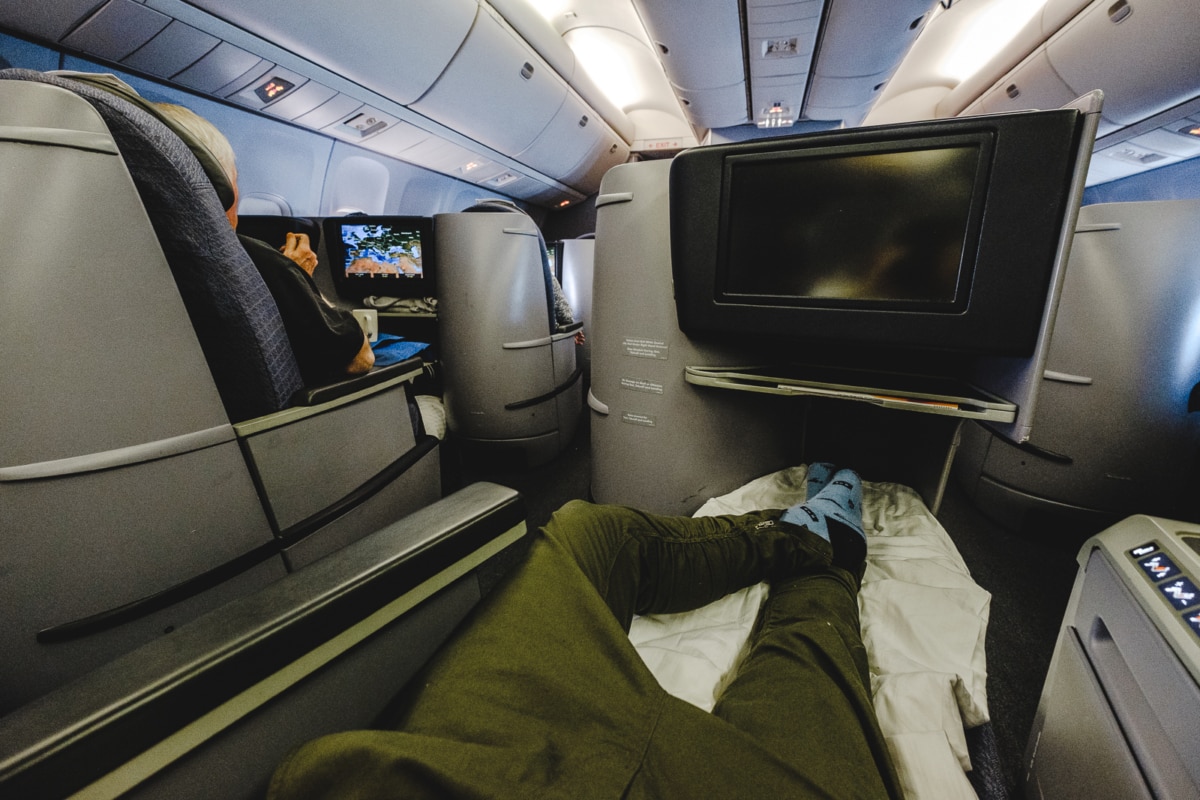I flew to my best friend’s wedding, 30 hours away, on the other side of the world, in first class. What’s more? The ticket only cost $5.60.
How I Booked an $8,967 First Class Airplane Ticket for $5.60
I hung up the phone with a giant grin plastered across my face. One of my oldest friends, who I’ve known since I was 14, just called to tell me that he was getting married! And the wedding was going to take place in just a few months in July. In Barcelona.
There was just one slight problem. I was nowhere near Barcelona. In fact, I was exactly 7,919 miles away on the island of Oahu, Hawaii. Which meant that I needed to book a flight literally across the world during the busiest travel season of the year.
As you can guess, flying 30 hours from Honolulu to Barcelona was not going to be cheap. But I knew exactly what to do. After all, I’ve been flying around the world for almost a decade. I like to think I’ve learned a thing or two.
It was time to put my travel hacking skills to the test. So I got to work.
How I Booked a First Class Ticket Around the World for $5.60
With just a few months until the wedding, I knew I needed to book a flight fast. Unfortunately, Honolulu to Barcelona is not an easy route to fly. Without a direct route, I was looking at two layovers and almost 30 hours of travel time.
- Option 1: Pay $500 or so for the flight in cattle class. 30 hours from airport to airport? Hell to the no.
- Option 2: Pay $8k for a first class ticket. Yeah, I don’t think so.
- Option 3: Pay 5 bucks and let my points do the heavy lifting. Yes please!
Now look, I’m not against flying economy. If I can score a good deal and fall asleep, then I’m happy to pay for a cheap seat. But with 30 hours of travel time ahead of me, and with enough long-haul flights behind me, I knew it was going to be one long, hellish ride in economy.
So I checked my points balance to see what I had.
Travel hacking isn’t just about collecting miles. It’s about knowing when, where and how to maximize your points in order to save the most on travel.
Throughout the years, Chase has been my primary bank of choice. I have their Sapphire Reserve, Preferred, Ink Business Plus and MileagePlus Explorer cards. Come to think of it, that probably makes me the ultimate Chase fanboy.
And as a result, I’ve racked up millions of points over the years. And these were points that I could use towards my flight to Barcelona.
See, it’s not necessarily about getting points to prepare for a specific trip. It’s about collecting points for the sake of having them on hand to use when special or extenuating circumstances come around.
So, What, Exactly, Is Travel Hacking?
Travel hacking is a strategic way of accumulating award points and then redeeming them in a way that gets you the most bank for your buck. And sometimes you can even get all bang without spending a buck at all.
Which, yep, means free—or nearly free—travel. I’m talking free flights, free upgrades to first class and even free hotel stays.
Travel hacking is more than just collecting frequent flyer miles and hotel points. It’s about knowing when, where and how to maximize those points in order to save big on travel.
Once you have enough points, you’ll be able to redeem them for discounted or free flights, also known as award fares. Essentially, you can think of your points as a special currency.
Trust me, travel hacking is easy to master. You can use your points to unlock a world of cheap travel, as long as you’re strategic about it. To be totally honest, getting the points is the easy part. The real trick lies in learning how best to redeem them.
Step 1: Find the Airlines with the Best Routes Available
So, my first step was to figure out which airlines flew from Honolulu to Barcelona. And that’s where flight comparison websites like Google Flights and Skyscanner really shine. They search through multiple travel sites to show airlines that fly the best route for the most affordable price.
In this case, price wasn’t so much of an issue, since I knew I wanted to redeem points to pay for it. So, mostly, I was looking to see which airlines flew the most efficient route. It was a long flight, so finding an easy flight path was important.
I found a few flight options that looked appealing, but they were pretty much all on either United Airlines or Turkish Airlines, which is actually just a partner of United.
So United it was.
Step 2: Look for Different Ways to Book Award Fares
The fastest way to redeem your points is to book an award flight is through your credit card’s online portal. You can search dozens of airlines, hotels and activities in one go. And, if you don’t have enough points available, you can spend what you have and charge the rest to your card.
But booking through the online portal comes with disadvantages. The value of the point is fixed, so the required number of points could fluctuate depending on the flight price. Under most circumstances, you should never do this. They almost never offer the best deal, but I always check it just to get a baseline idea of what a “regular” award fare would look like.
Knowing that I would be redeeming my Chase points, I checked their booking portal to see what they were offering. And, as I expected, Chase’s point valuation was too low. They wanted nearly 300,000 points for a mixed-class flight in business (a mix of economy and business seating) and more than 900,000 for a flight in first! That’s way more than I was willing to part with—and I knew I could do better. A lot better.
By doing a little of my own research, I also learned that these business class flights were actually in United Polaris. And while there is a slight difference in service, Polaris First and Polaris Business are essentially the same product. For those who want to get technical, they are different flight classes, yes, but really, I consider any seat in Polaris to be first class.
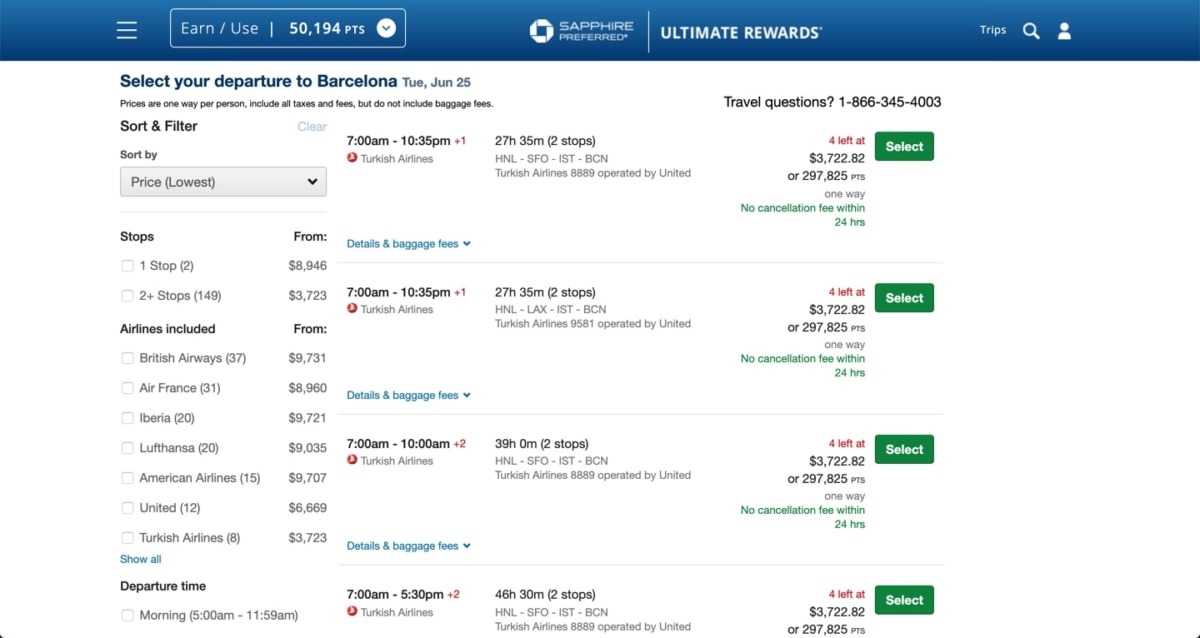
Another way to redeem points is to transfer them to your airlines loyalty program. This turns your reward points directly into frequent flyer miles that can be used towards the flight purchase or an upgrade with that airline.
But, when booking a flight using frequent flyer miles, flexibility is key. The airline might enforce blackout dates or have limited seat availability for award travel. So it’s best to keep your travel dates open.
And while you’re more likely to get a better return by transferring the miles, it’s not always the case. You’ll need to do the math to see where you get more bang for your buck.
Step 3: Use Point Valuations to Find the Best Award Fare
Knowing that United had the best flight between HNL and BCN, and knowing that the Chase Booking Portal didn’t offer a very good point valuation on this flight, I decided to check the United website directly.
You see, the value of a point depends on the credit card and the frequent flyer program. For example, Chase Ultimate Rewards points can be redeemed for between 1 and 1.5 cents each if booking through the Chase Ultimate Rewards portal.
But here’s the thing—you might be able to stretch your points even further by transferring them into a frequent flyer program with an airline. And that’s exactly what I did.
According to everybody’s favorite tipster, The Points Guy, Chase Ultimate Rewards points should have a value of 2.1 cents each when transferred to an airline. That’s more than twice the potential value than if you book through the portal!
Using this baseline of 2.1 cents per point, I could make sure the flight I redeemed either matched or exceeded that valuation. And since I bank with Chase, all my points transfer to the United MileagePlus program at a 1:1 ratio.
Step 4: Book the Flight with the Best Point Valuation
So, how did my points break down?
On the United website, my flight cost $8,967 one way. I then searched for an award fare (which United makes very easy), and there were quite a few options. I could spend 70,000 points for a ticket in economy or 165,000 points for a ticket in United Polaris—their version of first/business class with lie-flat beds.
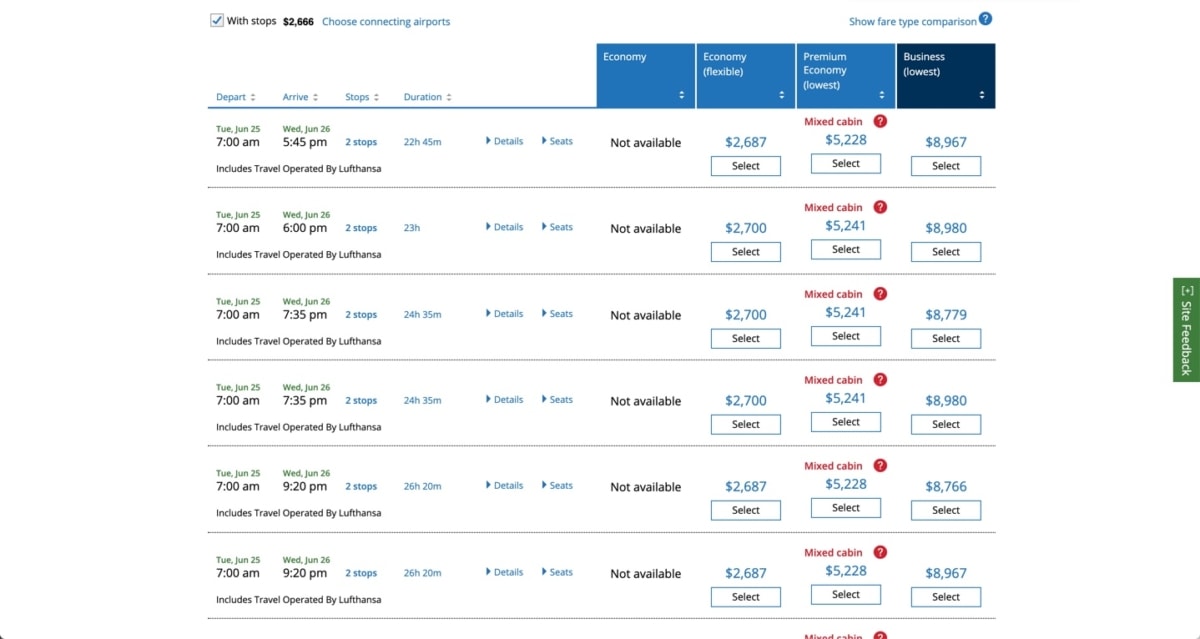
Based on the 2.1 cent valuation and 1:1 transfer ratio, if I booked using 165,000 points, the cash value of the flight dropped down to $3,360.
In other words, an $8,967 ticket in United Polaris actually only cost $3,360 if I paid using points directly through United MileagePlus. But in reality, the flight only cost me $5.60.
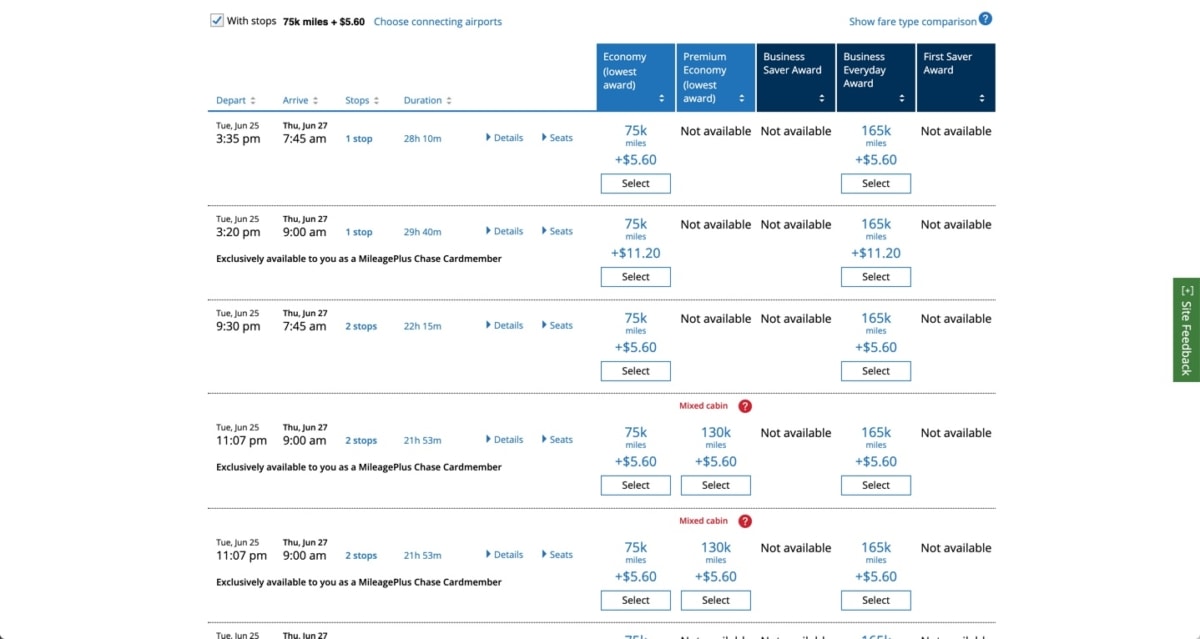
I logged into my Chase account, transferred the points to my United MileagePlus account (it’s an instantaneous transfer), and booked the flight for 165,000 points—all of which I earned absolutely free.
After a few clicks, 165,000 points and a five-buck credit card charge, I had a first-class flight to Barcelona, all the way from Hawaii. Not bad, eh?
How to Easily Earn Miles and Points
This kind of travel is actually really easy. Yes, it takes time to accumulate points, but if you start soon—even if you don’t have a trip planned—you’ll have the miles on hand for whenever you decide to take off in the future.
But how do you even earn those points in the first place? Despite what you might think, you don’t actually have to travel in order to get them!
1. Wait for a Big Sign-Up Bonus with a Credit Card
The fastest way to earn reward points is to sign up with a credit card that has a generous signup bonus for new customers. The number of reward points differs between companies and can change depending on the time of year. So it’s always best to wait for a special deal that offers the maximum number of bonus points.
Keep in mind that you’ll only earn the points after spending a certain dollar amount in the first few months. But if you score a good signup bonus, and you know you can meet the minimum spend requirement, there’s almost no reason not to.
Something really important to note is that signing up for credit cards does not negatively impact your credit score. Many people don’t sign up for credit cards because they think it’s going to hurt their credit score, but that’s actually not true. You might get a small ding on your credit report and, okay, your score might drop by a couple points (literally, just a couple points), but that’s short-lived.
Since credit scores are highly influenced by your credit utilization, opening a new credit card can actually increase your credit score. With a higher credit limit and a lower utilization percentage, there is actually more to gain.
Many travel hackers—myself included—open and close credit card accounts on a rotating basis, just for the sake of earning sign-up bonuses, all while earning potentially millions of points per year (seriously). And they do this while maintaining excellent credit scores.
2. Earn Points on Everyday Purchases
Once you have one of these credit cards, you should be charging literally everything to your card. Most offer at least one point per dollar spent. However, there are other cards that will double or even triple the number of points you earn.
Some cards—like my personal favorite, the Chase Sapphire Reserve—offer three points for every dollar you spend on travel. So, whether you’re taking an Uber or booking a flight, you stand to earn three times as many points when you book on your card.
Other cards offer similar multiplier bonuses when you charge at bars, restaurants, grocery stores, gas stations, office supply stores, and more. Each card offers different bonuses, so it’s important to do your research and get the cards that make most sense for how and where you spend.
This is by far one of the easiest ways to maximize your points. By simply using your credit card on ordinary purchases, you can rack up mass amounts of points in a short period of time.
3. Shop Through the Online Shopping Portal
Almost every airline loyalty program or credit card company has an online shopping portal that connects directly the brands and shops you know and love. If you’re a big online shopper, then you can earn bonus miles just by clicking through the portal first. This is another one of the easiest ways to earn points without ever taking a flight.
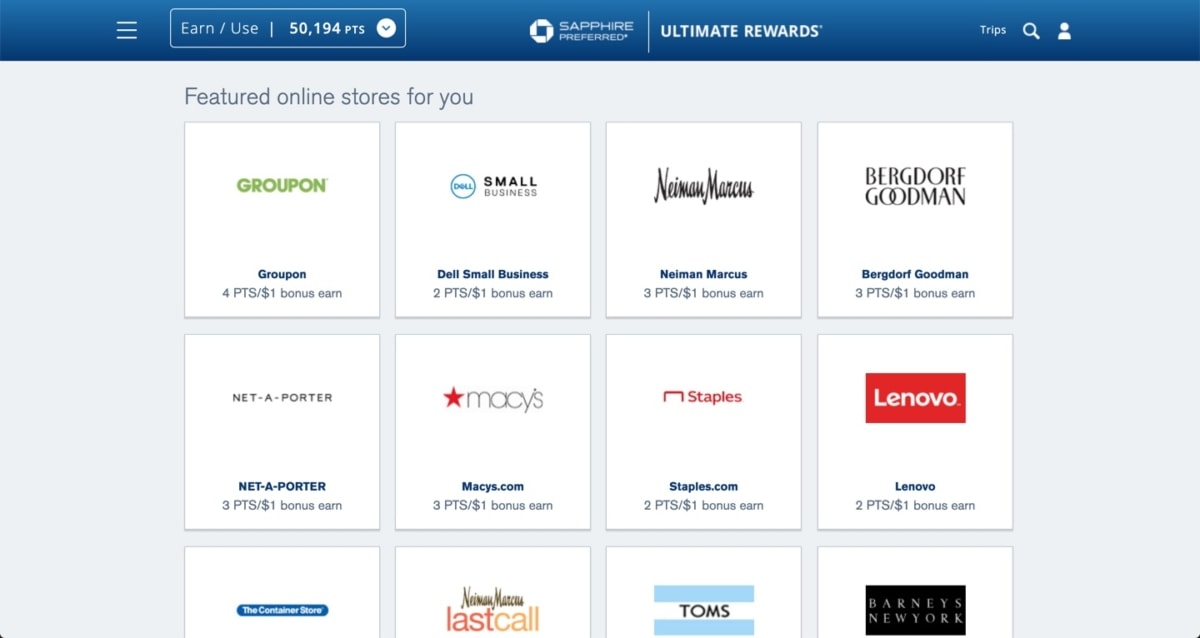
Living on the east coast of the States, United was the airline that most often connected me to the places I wanted and needed to go. So I installed the MileagePlus Shopping extension in my browser, and now, every time I visit a website to buy something, it shows me if there’s a multiplier available for that merchant.
This is when things can start to get really lucrative. When you combine your credit card multipliers with loyalty program multipliers, you can earn a heck of a lot more points.
For example, United MileagePlus offers three points per dollar on all purchases made on Booking.com. So, if you book on a credit card that’s giving you three points per dollar, like the Chase Sapphire Reserve, and you book it through the MileagePlus portal, you’re actually earning SIX POINTS PER DOLLAR on that transaction. That kind of return is insane, and if you think about point valuations, instead of earning the original 1 or 1.5 cents per dollar, you’re earning more than 10 times more at 12.6 cents per dollar.
And this is only the tip of the iceberg.
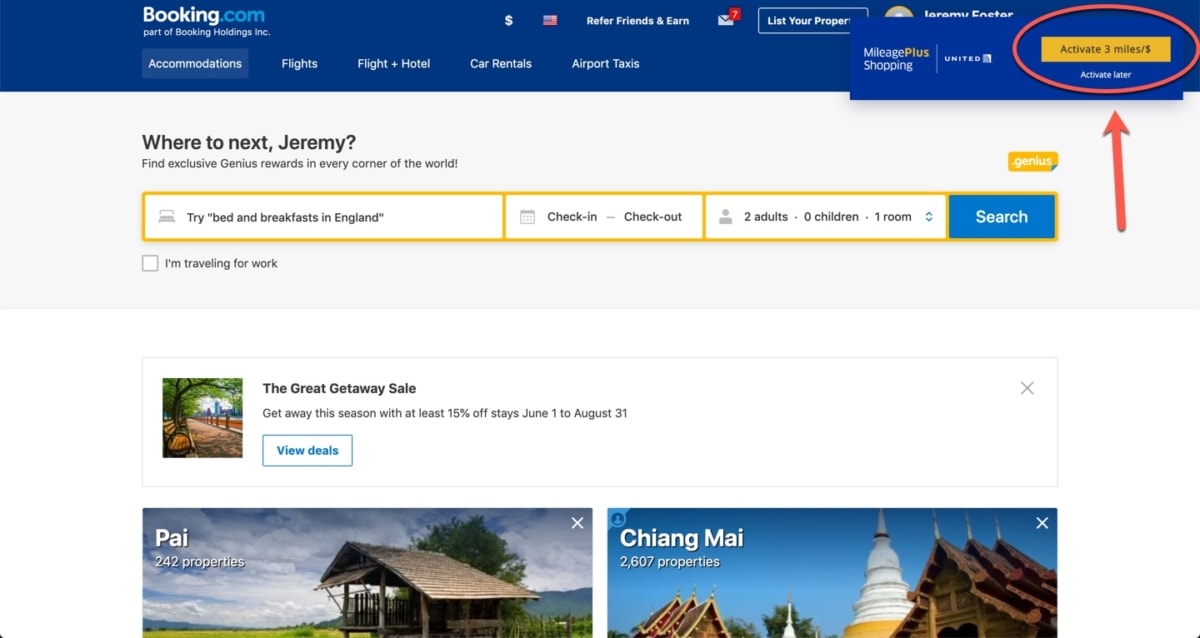
There are a lot of ways to earn points, but by far, the easiest is through credit card signups, bonuses and strategic spending. These days, anytime I spend a single dollar, I think about how I might be able to maximize that dollar for points. Instead of purchasing blindly, I’m more calculated in how I spend my money, and which credit cards I’m using, which means I’m getting the most bang for every buck I spend.
It might sound intimidating at first, but you have to start somewhere. And when you’re on a 30 hour flight across the world, relaxing in first class with a lay-flat bed and free booze, you’ll never find yourself wondering, “What’s the point?”
(See what I did there?)
